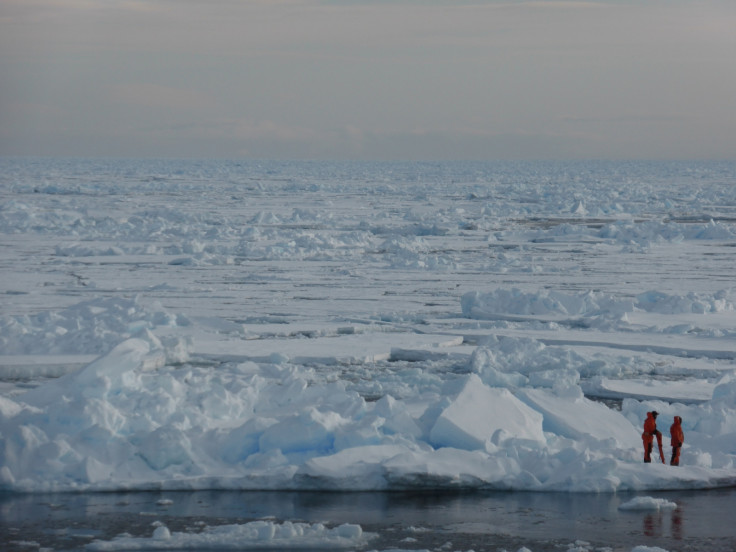We're each responsible for melting 24 square metres of Arctic sea ice a year
For each ton of carbon dioxide emitted, an extra three square metres of Arctic summer sea-ice is lost.

The impact of individuals' carbon emissions on the loss of Arctic summer sea-ice has been calculated for the first time. For every ton of carbon dioxide that people emit, the summer sea-ice in the Arctic is 3sq m smaller than it would have been otherwise.
For the average UK person with a footprint of about 8 tons of carbon dioxide – although estimates of average footprint vary – this translates to about 24sq m of Arctic sea-ice.
The study finds that another 1,000 gigatons of anthropogenic carbon dioxide will be enough to entirely melt the Arctic summer sea-ice. The findings are published in the journal Science.
Dirk Notz, leader of a Max Planck Research Group at the Max Planck Institute for Meteorology, told IBTimes UK that the relationship between global anthropogenic carbon emissions and the trend in loss of summer sea-ice was remarkably straightforward.
The team looked at the long-term changes in summer sea-ice levels from one year to the next. "If the climate was stable there would be no long-term trend. But there's a very strong trend in that there is less sea ice every year."
How much of that yearly decrease was down to human emissions had not been calculated in this way before. "We came up with some very intuitive numbers for the effect that each and every one of us has on the sea ice," Notz says.
"So far, climate change has often felt like a rather abstract notion. Our results allow us to overcome this perception," says study co-author Julienne Stroeve of the US National Snow and Ice Data Centre. "For example, it is now straightforward to calculate that the carbon dioxide emissions for each seat on a return flight from, say, London to San Francisco causes about 5sq m of Arctic sea ice to disappear."

The sensitivity of the Arctic sea-ice has been underestimated in previous studies, the authors say. "It seems that it's not primarily the sea ice models that are responsible for the mismatch. The ice just melts too slowly in the models because their Arctic warming is too weak," says Stroeve.
Notz adds that on average in the models for each ton of carbon dioxide there is, only 1.75sq m of sea ice disappear. Notz and Stroeve used satellite data rather than models to see how much ice had melted, and measured how this related to global carbon emissions to reach the higher figure.
Over the past 40 years, Arctic summer sea-ice has shrunk by more than half and climate models predict that the other half will be gone by the middle of the 21st Century if climate emissions continue as usual.
How much have I melted?
© Copyright IBTimes 2025. All rights reserved.






















